Welsh sailor's heroic role in grisly shipwreck
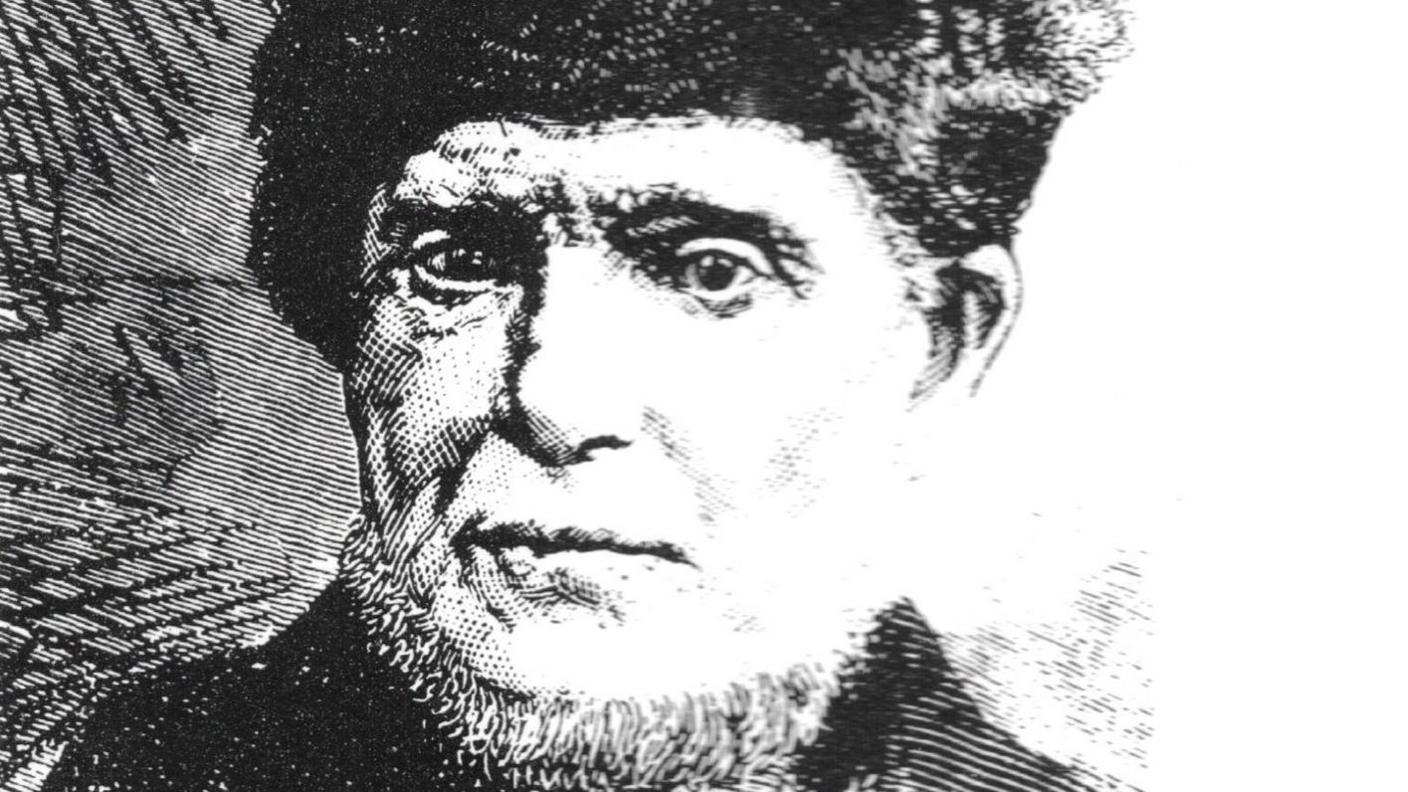
Thomas Lewis, seen here in a drawing from 1875, was known locally as Twm Pen-Stryd, which loosely translates as Tom, Top of the Street
- Published
One hundred and fifty years ago Able Seaman Thomas Lewis became the hero of one of the most grisly shipwrecks in British maritime history - which included drowning, fire and even cannibalism.
In the autumn of 1874 Twm Pen-Stryd, as he was known locally, from Moelfre on Anglesey, was serving onboard the Cospatrick, transporting emigrant labourers and cargo to New Zealand.
On the night of 17 November, off the Cape of Good Hope in southern Africa, an uncontrollable fire broke out on the wooden sailing ship, resulting in all but three of the 479 passengers and crew losing their lives.
Yet had it not been for Twm's experience - including urging them to drink the blood of those who had already died - not even those survivors would have made it back to Britain to tell the tale after ten days adrift in a lifeboat.
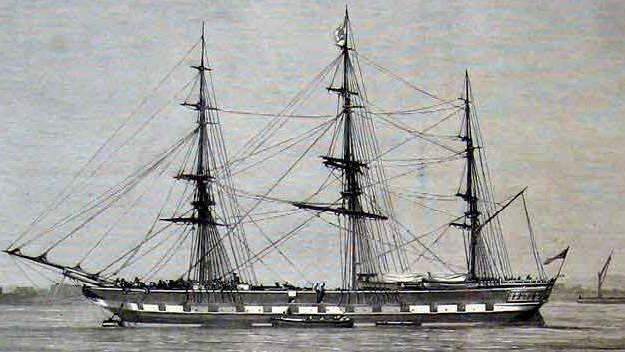
A photograph of the Cospatrick taken at Gravesend before it set sail for New Zealand in September 1874
Twm - whose nickname loosely translates as Tom, Top of the Street - was born into a fishing and seafaring community in 1828, one of seven children.
In his 1976 book, The Survival of Twn Pen-Stryd, RR Williams wrote that Twm's father was blind, a possible reason for the necessity for his son to go to sea and provide income for the family.
Whatever his motives for leaving, when Twm returned from the Cospatrick disaster aged 46 it was said to be only his second visit home in 25 years.
Williams added that little is known about Twm's early life and sea-going career, although he did mention serving in the Navy as a young man.
"It is hinted, too, in some newspapers of the period that he had served with Belgian crews in foreign ships, and that as a Welsh speaker, he had acquired a mixture of Welsh and Flemish accents when conversing in the English language," Williams wrote.
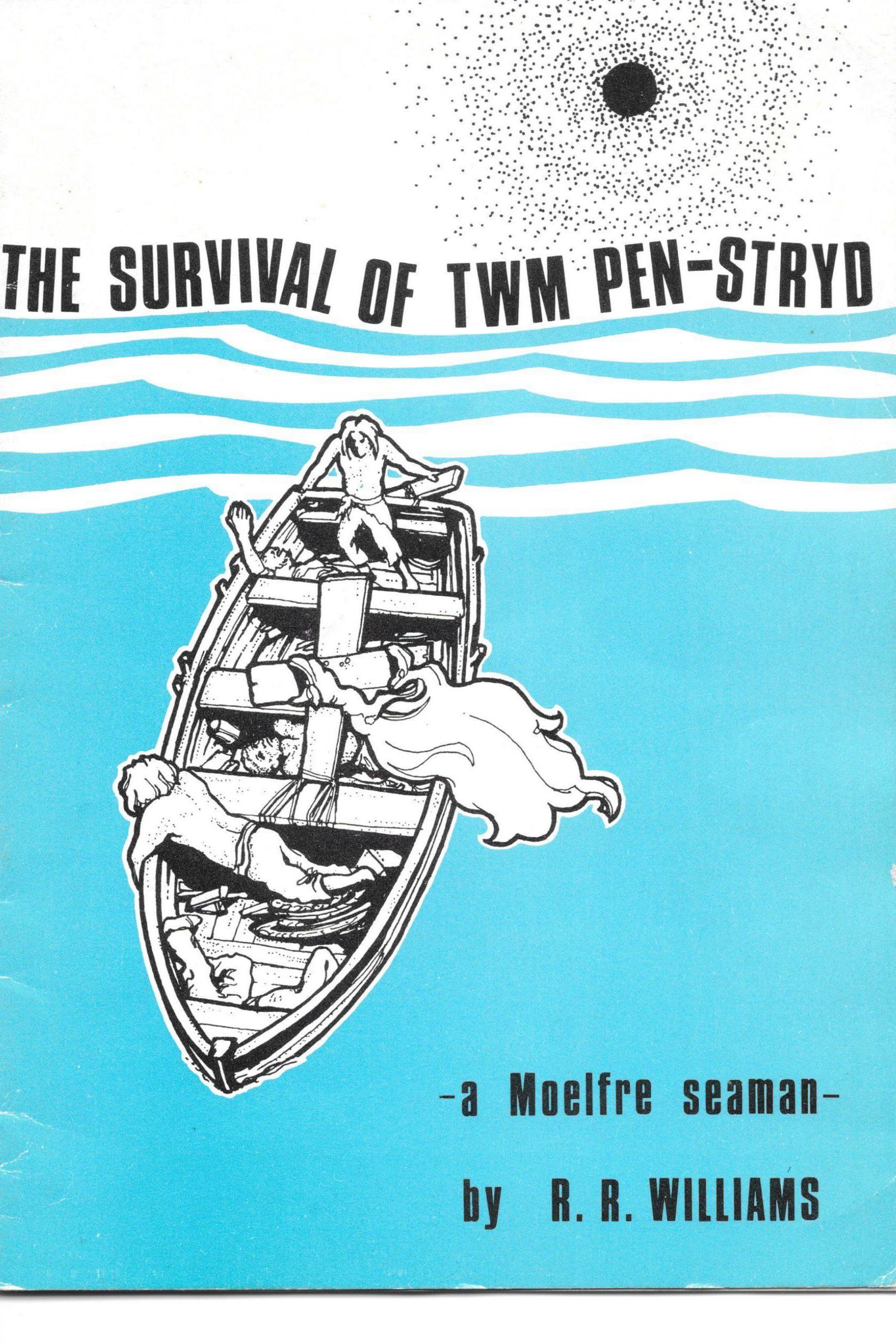
RR Williams' book, The Survival of Twm Pen-Stryd, was published in 1976
In the 1870s an agricultural depression gripped rural Britain, in-part due to a run of wet summers and poor harvests, but also cheaper shipping costs and the dropping of tariffs.
As a result, huge quantities of grain were imported from the newly settled North American Prairies and the Steppes of Russia, undercutting Britain's farmers.
New Zealand became attractive around this time as it was actively encouraging new settlers with assisted or free passage.
In contrast with the convict voyages to Australia, the Cospatrick was comparatively comfortable, with an A1 safety certificate and good food and accommodation for the passengers.
But Rhodri Clark, the editor of the Welsh history website History Points who has researched Twm and the disaster, believes the Cospatrick may not have been as welcoming as the owners wanted people to believe.
"The Board of Trade inquiry into the Cospatrick found the likely cause of the fire was passengers breaking into the hold at night in search of booze, lighting their way with an open candle," he said.
"It seems they got far more than they were bargaining on, as the cargo also contained highly flammable straw, palm and linseed oil, and materials like turpentine, paraffin, paint, candles and varnish, with tons of coal nearby."
Scans of Titanic reveal wreck as never seen before
- Published17 May 2023
How Welsh town's amateur radio heard Titanic SOS
- Published22 May 2023
War-torn Barry steamer salvaged
- Published11 April 2015
Mr Clark - who has installed a QR code on the site of a former shop in Moelfre bearing Twm's name, as well as an audio description, external of the story on its website - added that there were only six lifeboats, with a maximum capacity of 187, available to the almost 500 onboard.
"Incredibly Cospatrick was awarded an A1 safety certificate because her six lifeboats met the rules of the day, which determined the number, not by the amount of passengers, but by the overall tonnage of the ship."
This rule would not be changed until the sinking of the Titanic almost 40 years later, he added.
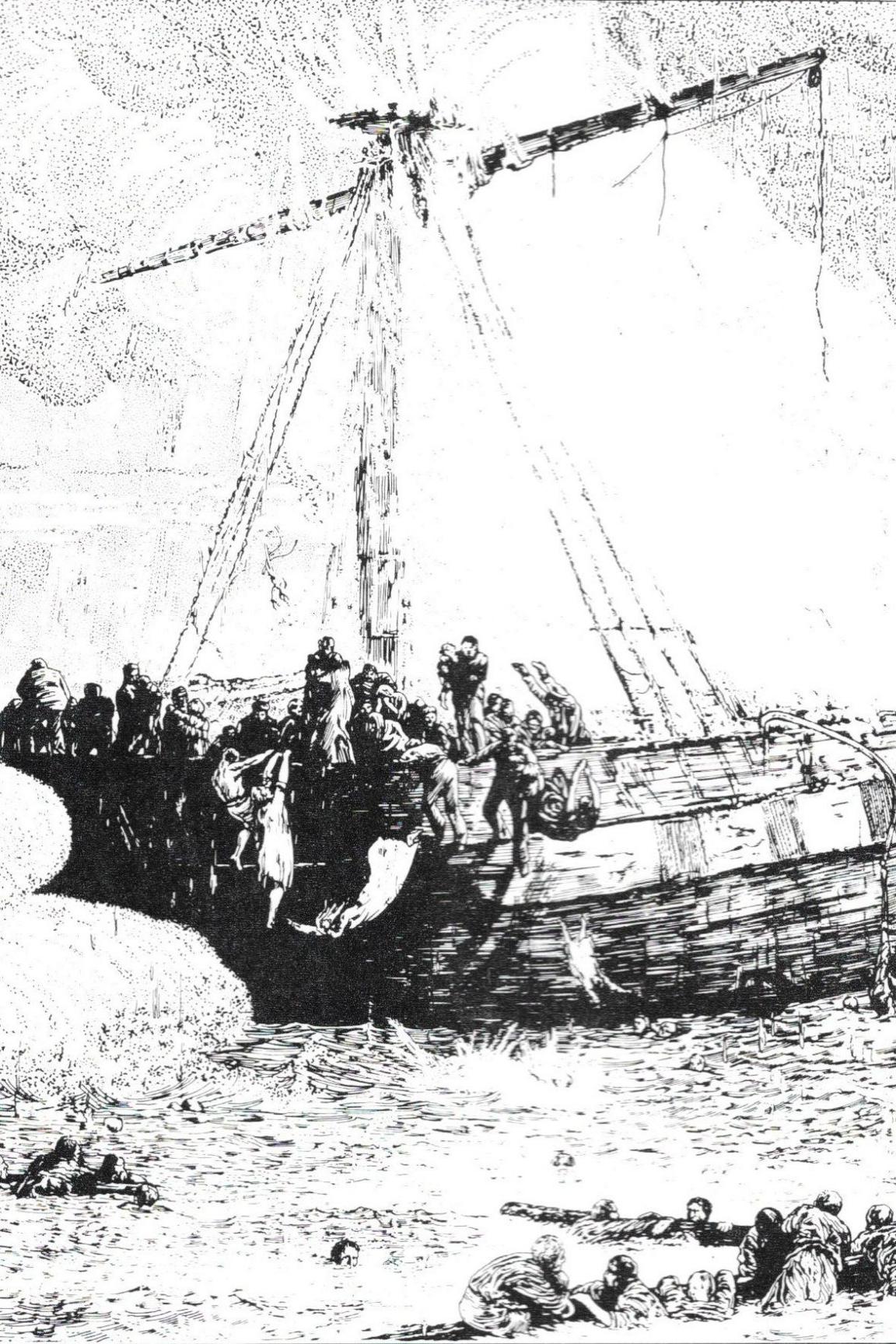
A drawing of the Cospatrick ablaze
Twm's heroics began immediately after the fire broke out, manning the water pumps and braving the flames and smoke long after many of his fellow officers had abandoned their posts.
He was finally forced to flee for his life as the blaze became unmanageable - although his actions had allowed dozens to get away.
Of the six lifeboats, four were destroyed in the fire, an overloaded fifth capsized, leaving only one upright and manoeuvrable.
Twm and his two eventual fellow survivors – Second Mate Henry MacDonald and Ordinary Seaman Edward Cotter, just 18 – swam across to right the upturned boat, helping the 62 people who had made it off.
Without food, water and with broken oars, they drifted for 10 days, powerless to respond to the cries for help from those still aboard the stricken Cospatrick.
Second Mate MacDonald was glowing in his praise of Twm at the 1875 inquiry.
"Thomas Lewis gave Peter Cope, the ship's baker, his dungaree over-trousers, as he was nearly naked, and that was typical of his conduct throughout our ordeal.
"When other men were floundering, he discovered the inner strength to do what was necessary," he said.
With just a handful still alive, Twm was the first to make the grim suggestion that they had to drink the blood and eat the livers of those who had already died.
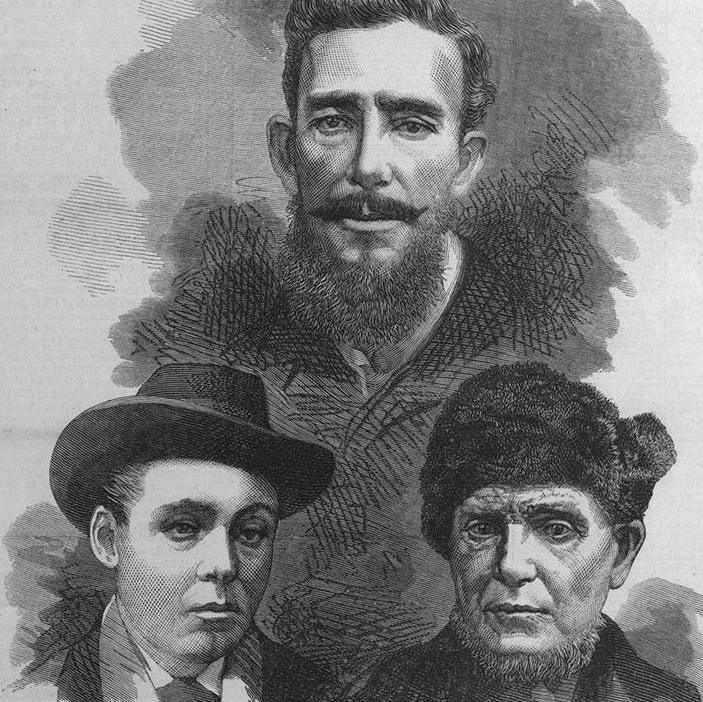
An 1875 illustration of the survivors Henry MacDonald (top centre), Edward Cotter (bottom left), Thomas Lewis (bottom right)
Twm told the inquiry: "I unsheathed my knife, and placing the sharp point on the wrist of one of the dead men, I made a deep incision. I quickly bent low over the bleeding wrist, and drank his blood."
He said he also urged two others to "follow suit if they were ever to see home again".
"I then cut out the livers of the two dead, and distributed the pieces to others on board... After this the bodies were delivered to the sea."
Finally, on their 10th day adrift, they were spotted by the British Sceptre, an iron sailing vessel heading to Dundee from Calcutta.
Two of the five still alive at that point died on their way to St Helena, in the middle of the Atlantic, but Twm, MacDonald and Cotter eventually made it back to Britain on New Year's Eve 1874.
Mr Clark said Twm was already volunteering for the Moelfre lifeboat less than a month after returning, including being "involved in a significant rescue" a few days before going to London for the inquiry.
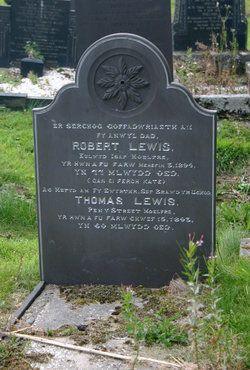
Thomas Lewis is buried at St Allgo Churchyard in Llanallgo, Anglesey
Twm returned to commercial shipping, but once again met with misfortune.
Williams wrote that years after the Cospatrick affair Twm was unloading a cargo of slate slabs on the River Thames as a mate on the CS Atkinson, a Bangor-owned boat, when the hoist failed, crushing his leg.
"After long and painful treatment, which ended in the amputation of his leg, he finally 'swallowed the anchor' and passed the remainder of his life sharing the parental home with his married sister at Pen-Stryd," Williams wrote.
"He became a proverbial figure locally, throwing his wooden leg in a dramatic sweep as he peg-legged his way around the village.
"Bearded and weather-beaten, this retired old-salt sported a seamen's peak cap, blue jersey, and bell bottomed trousers until his death in his 66th year in 1894 ."
Related topics
- Published8 November 2024
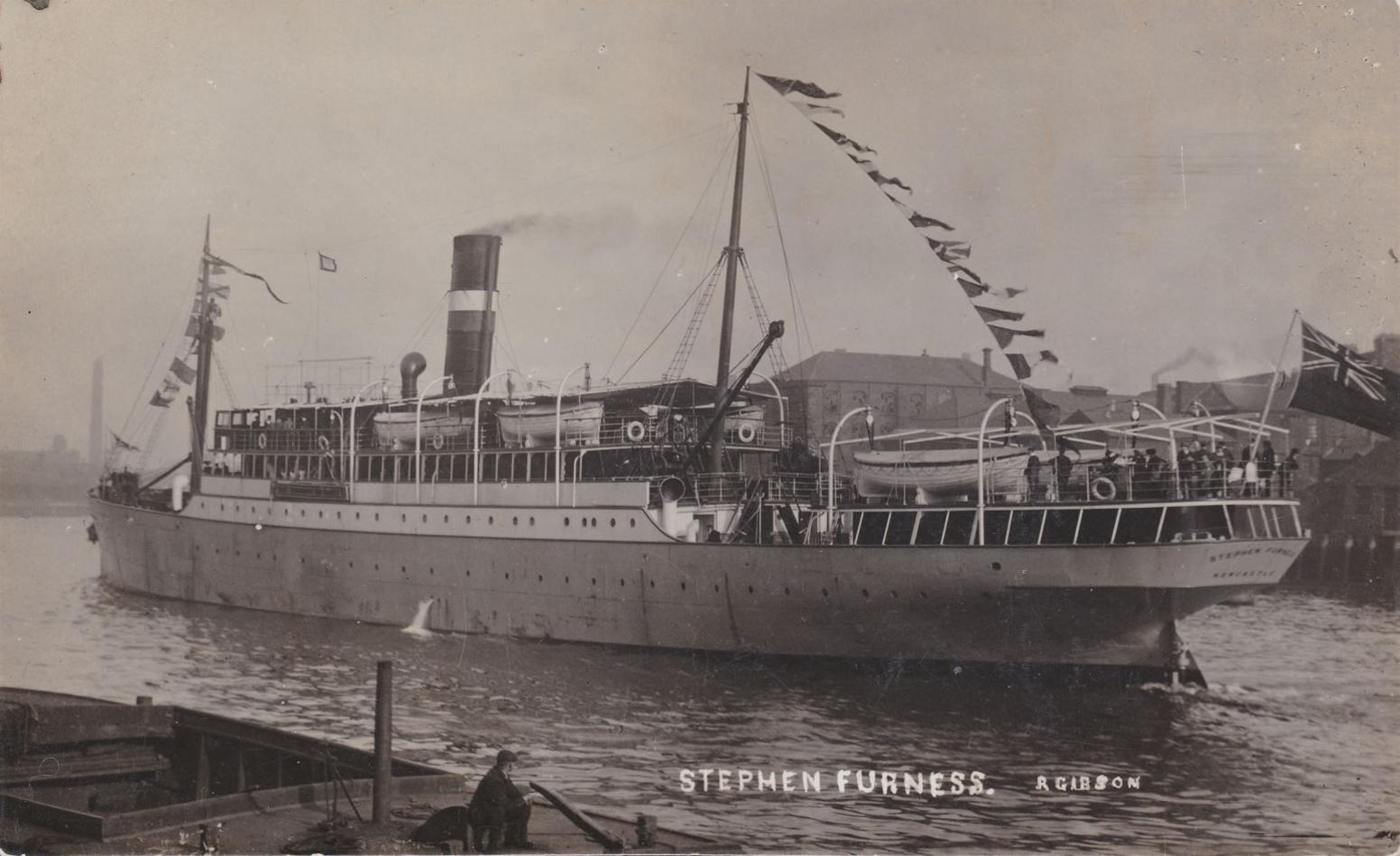
- Published3 November 2023
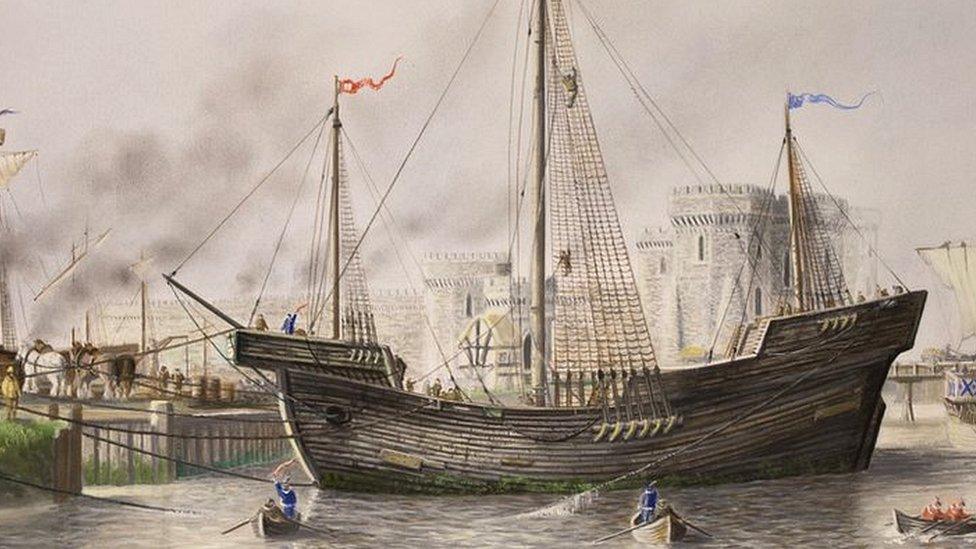
- Published13 October 2019
